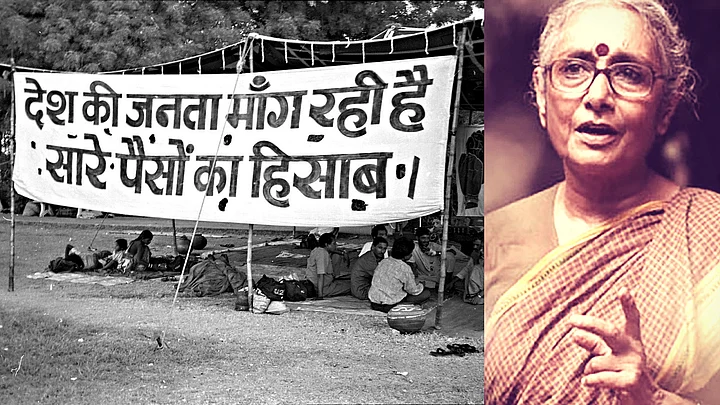Aruna Roy has led from the front a two-decade-long struggle that has legitimised your right to know. In simple words, the Right to Information Act – passed in October 2005 – assured accountability and transparency in the government, virtues pertinent to a democracy.
In light of the release of her book The RTI Story: Power to the People, Roy takes us through the grassroots struggle involving activists, teachers, lawyers, students and common people that gave birth to a people’s law.
Can the power of the Right to Information Act be eroded in the country?
Writers, teachers, academicians, people, students, the whole gamut joined the 20-year-long struggle to make the Right to Information a reality. It is a people’s law and that is why I believe the power of the RTI cannot be eroded in this country. It has become ‘my law’ and not somebody else’s law. And the campaign and struggle played a crucial role in making it personal and relatable.
How did the protest for the right to know maintain momentum for 20 years?
Protests need to be creative. I’ll give you an example. In Poland, the government made it compulsory to see these terrible television broadcasts. As a sign of protest, people began switching the television off during that hour. When they switched it off, the government forbade anybody to do so.
It was like a curfew. No one could go out on walks or do anything else. So every house turned the television on, put it on their windows and made it face the street. Protests need to be creative. The whole RTI movement had very creative protests. There were songs, powerful theatre, literature, drama and more.
What are the benefits of the RTI Act?
For starters, questioning authorities has been legitimised. In many cases, people would never be allowed into an office and claim what is theirs. There is no backtracking on this benefit anymore.
Secondly, in offices where corruption is very obvious, the public information officer now accepts the flaw in office. And the person charged with corruption comes running to you. Things have changed, as now there is a whole body of people in that particular office who are willing to indict the guilty.
Third, it has become wildly recognised as a tool. From Himachal Pradesh to Manipur to Jammu and Kashmir, everyone knows about the RTI.
What are the drawbacks of the RTI Act?
When the tool develops the mechanism to neutralise, the tool also develops. The public information officer has now understood how to deny information. Also, the government that gave us the law tried to amend it in six months. And in terms of the misuse of the law, which is 0.00001 percent, I am of the firm opinion that they should be booked under the Indian Penal Code as it is breaking the law.
What is the RTI Act’s biggest strength?
In this country today, fear is what is aiding the government’s existence. Fear and hate is what the government is building itself on. If there is fear, you can’ talk, you can’t write a WhatsApp message you wish to, you can’t speak your mind, you can’t criticise the prime minister and the Cabinet ministers, you can’t have public spaces for protest, you can’t write anything, and you can’t have a film that will say something different.
Just like all these facets that are being attacked, the RTI is also a victim. Therefore, the fear psychosis of an individual will also creep into the RTI. However, the RTI Act is probably the only Act that has been fighting this fear psychosis on a day-to-day basis.
More than 60 RTI activists have died since the Act was passed in 2005. Has a lot of scepticism developed around the RTI and has that shaken the will of the people to use it as a tool?
Unfortunately, in the body of debates on the RTI there is only negativity. Sometimes, I feel this is a strategy to demoralise the 60-80 lakh annual users of the RTI. That cynicism is being perpetrated and I’m a little tired of that kind of cynicism.
It needs to end.
And regarding the will of the people, I am very impressed that people are fighting everyday to ask questions for answers they deserve to know. People are continuing to fight where RTI-related deaths have occurred or where they feel there might be violence against them. That being said, I am very angry with the government that perpetuates and maintains this violence against such people.
(The Quint is now on WhatsApp. To receive handpicked stories on topics you care about, subscribe to our WhatsApp services. Just go to TheQuint.com/WhatsApp and hit send)
